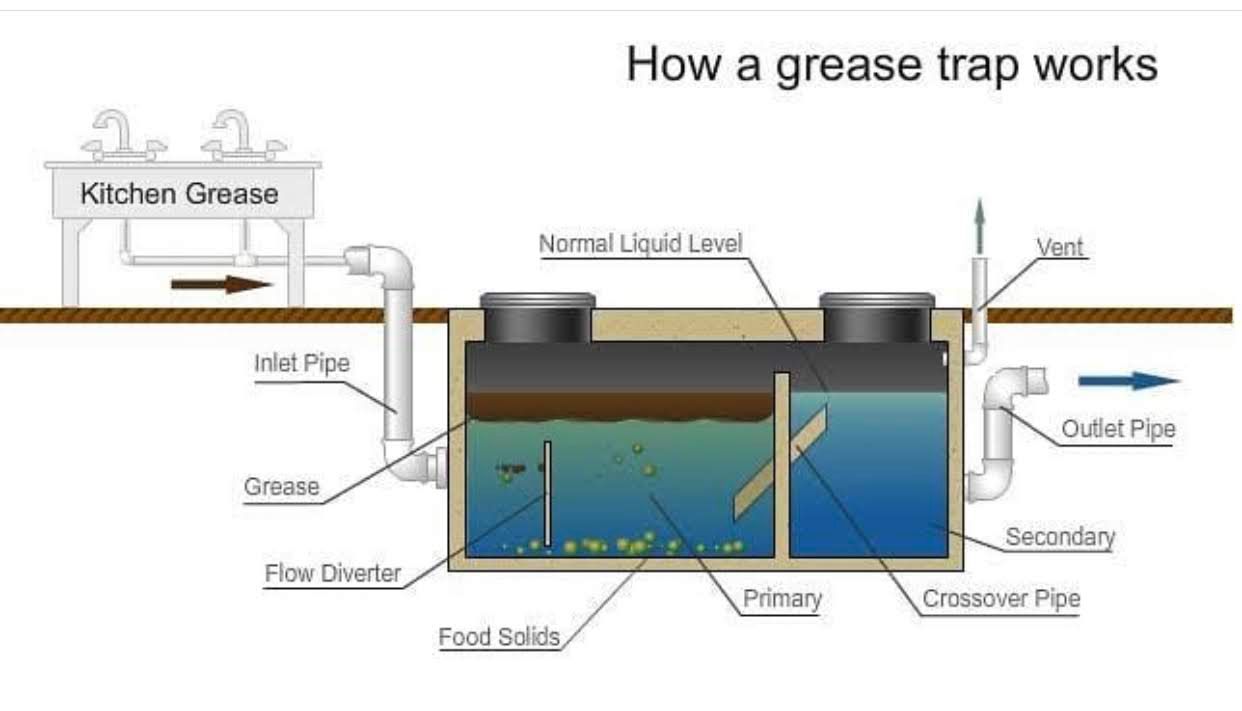Grease Trap Care and Maintanence
Published by King Plumbing,
A grease interceptor trap is a plumbing fixture that collects the grease, fats and oils from a kitchen and stops it from going down into drainage systems. Registered plumbers install these traps.
Water from kitchen sinks and dishwashers flow through the plumbing waste pipes and enter into the trap. As the water cools the grease, oil and fat become hard and float to the top of the trap.
The cleaner water then flows through the trap and out of the lower outlet and into the sewer drains.
The grease, oil and fat stay in the trap.
Grease traps are usually located outside of the building, close as possible to the location of the kitchen sink. The trap will have a sealed gatic lid, a vent to atmosphere and clean out points at either end. A trap must then run into a gully so the water can be easily collected and tested by local authorities.
Who Needs a Grease Trap:
Businesses and public kitchens like restaurants, schools and sporting clubs, by local government law, install grease traps to their drainage system. The purpose of a grease trap is to stop fat, oil and grease from entering into the local governments plumbing mains and treatment facilities. Congeleaded grease and oils harden, which leads to expensive maintenance and blocked overflowing drains.
A trap must be maintained and checked regularly to prevent overflowing waste blockages and unpleasant odours. We have listed some measures you can take to avoid your grease interceptor trap from overflowing.
Stoping the Grease from Building Up:
Before putting dirty pots, pans and dishes into the sink or dishwasher, try scraping as much grease and fat as you can into the rubbish bin.
Sinks are not waste disposal units for fat and grease. Hot water will make the grease soft and easy to remove of plates, but as soon it is in your waste pipes it cools, goes hard and causes blockages.
Chemical Additives:
You can also use a "Grease and Waste Digester pH Neutral formula". A commercial kitchen grease trap will run a lot more smoothly and cut down on maintenance if used correctly. Here are some ways you can use this method:
- You can dissolve a liquid or powder formula into the top of the grease trap, and this will help dissolve grease keeping the water flowing in and out of the trap smoothly.
- Bacteria blocks inserted into the trap. These take about a month to dissolve before having to be replaced.
- The largest of commercial kitchens may require you to install injection pumps that regularly inject bacteria into the trap to help the grease break down.
It is more likely you will need the trap professionally pumped out regularly. Many local government councils require you to clean out a grease trap as part of an operating permit. Failing to maintain a trap will have it cleaned out at a more frequent rate, an expensive cost a small business does not need.
www.kingplumbing.com.au Leading blocked drain plumber in Hobart, specializing in unblocking drains.

